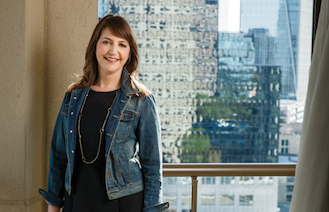by John Trybus, Managing Director
Corporations giving money to worthy causes is just about as old as business itself.
Despite being controversial to some, philanthropy from titans of industry among the likes of John D. Rockefeller, Andrew Carnegie and J.P. Morgan proved years ago that corporations – and their executives – can do well while doing good.
But the days of corporations simply writing checks to nonprofits without activating true cause partnerships that not only help a social issue but also are authentically tied to the brand’s DNA in the minds of consumers are smartly becoming fewer and farther between.
Kate Atwood, executive director of the Arby’s Foundation and today’s social strategist, proves that strategic corporate philanthropy is becoming….well, more strategic.
“A foundation today should be a secondary platform to the brand’s marketing strategy and that’s what we’re doing here at Arby’s which is really neat to see,” Kate explains. “We exist to be successful around the issue of childhood hunger but also to be successful in how we further the brand and the brand power.”
Corporate philanthropy can be created in a way that creates both social impact (for childhood hunger in this case) and brand impact for companies like Arby’s, which is one of the county’s largest quick service restaurant chains with more than 3,500 retail locations nationwide.
Kate’s career journey has been a fascinating one. Prior to Arby’s, she founded Kate’s Cluba nonprofit that empowers children and teens facing life after the death of a parent or sibling as a result of her own experience losing her mother at a young age. Learn more about Kate’s amazing journey on her website.
“I love the fact that every day I have a purpose in my job and that allows for me to get very passionate behind it,” Kate says of her work. “More than anything it allows me to be a catalyst for other people to understand how wealth can actually be obtained by giving back and helping somebody else.”
Here’s a preview of some of the Arby’s Foundation’s best practices that Kate and I discuss in the interview:
- The importance of a laser mission focus. Hitting the pause button and determining a strong mission for a corporate foundation is important and that’s exactly what Kate and her team did. Through a strategic taskforce and the help of consultants, the Foundation went through a strategic process to understand the societal issue it would champion and articulate through a very clear mission. “Rather than just pick an issue that may be an executive passion the new layer to answer is ‘what matters to our consumer?’ Understanding that we were going to bring this philanthropy program to consumers, we wanted it to resonate with them,” she explains. The result was a laser focus on helping bring an end to childhood hunger through a partnership with Share Our Strength.
- Success goes like this: structural changes first. Communicate second. In addition to determining a laser mission focus, Arby’s also wanted to make sure it walked the talk by updating the restaurant’s kids menu to include healthy options. “I’m really proud that we took a man in the mirror approach,” Kate says. “We started by looking at ourselves…and tweaking our kids menu.” Bottom line: successful philanthropy program are those whose values are integrated into the company’s product offerings too.
- Take the show on the road and spend the brand capital. Once the mission and structural changes were in place, it was important for Arby’s to combine “awareness, action and advocacy – the triple A’s,” according to Kate and so they created the Hungry for Happiness Tour which is now in its second year. “This was a way for us to get boots on the ground and be on the front lines of this issue….we wanted to really get in the communities and give children a huge carnival of fun and activities while also enjoying an Arby’s Kids Meal,” Kate says of the tour. “It goes to show you the excitement of the brand and what the brand can do to have a lasting impact around social change in the community.”
Listen to my interview with social strategist Kate Atwood to learn more about how corporate philanthropy can jointly do good and achieve brand marketing goals.

